Standard Bathtub Dimensions
When you think about designing your new home or renovating your current abode, one thing you really tend to overlook is the Bathroom. It is the space that makes all the difference; it turns a normal room into the master bedroom. It is the space that washes away all the wear and tear of the day. It is a special place that, with the right aesthetics and design, can make you feel like you are at your own spa facility.
And do you know what makes this area of the house so special?
It is that coveted bathtub. Whether it is a large tub like the Japanese-style Ofuro or a simple Alcove tub, it just feels good to soak in it after a long, hard day at work; or after the kids have been driving you crazy all day. A good soak can be therapeutic. It relaxes the muscles and calms the mind. Can you imagine how the bubbles tickle you? Yea, that’s a beautiful feeling. That even made Chandler love a good bath.
However, often people are reluctant about getting a bathtub because they don’t have a large bathroom to fit it in. This is a misconstrued notion. You don’t need a large bathroom to fit in a new bathtub. You just need to choose the right bathtub, from a variety of sizes, for your smaller bathroom.
Allow us to show you how you can go about selecting the right bathtub for a small space, and the type of bathtub you can choose for a large bathroom.

- First and foremost, you must consider the space you have allocated to design your bathroom.
- You need to consider the layout of your bathroom. You can choose a standard design. Or, if you have a sufficient amount of space, you can design a Master Bathroom.
- Thirdly, you need to determine the amount of space you have to install a new bathtub. Consider the fixtures and pipe-fitting, and where they would go.
- Then choose the type of bathtub you would like to install. You can choose a standard tub or a soaking tub. You can also choose how it would be installed and arranged based on the fixtures and style, such as shower combinations, lounging facility, faucet fixtures, bathroom lighting, etc. Don’t worry, we will provide more details on this subject so you can make an informed decision.
- Finally, choose the right bathtub from a variety of sizes and turn your bathroom layout into an escape hatch.
So, now that we have those pesky details out of the way, let us discuss the types of bathtub, styles and bathtub dimensions that you can choose from, to relax:
1. Freestanding Bathtubs
The most popular choice of Bathtubs among homeowners with Master bathrooms are the Freestanding Tubs. As the name suggests, these tubs do not need any support to stand on the bathroom floor. The Freestanding bathtubs are all-inclusive of the faucet and other necessary fixtures. Since they take up a bit more space, these are ideally good for large bathrooms.
Image credit: archiproducts.com
These freestanding bathtubs come in different styles:
A) The Slipper
These tubs are designed like high-heeled shoes. One side of the tub is taller than the rest of the structure. This is used to hang towels or provide a back-rest while taking a long, pampering soak, much like a spa facility. These designs induce a feeling of being in Paris for some reason; or is it just me? Oh well, we all love Paris.
B) The Bateau
This bathtub looks simple, but when you install it in your bathroom, you can’t help but smile. This type of bathtub adds a rustic and elegant look to the master bathroom. The fixtures in the tub are positioned in the center for feasibility. You can choose from various designs such as Acrylic, cast iron, or simple ceramic. These bathtubs are great for a romantic soak for two.
C) Clawfoot Tubs
These tubs provide the perfect layout for a long, relaxing soak. The unusual name of this tub stems from the earlier design of this type of bathtub when the feet of the tub was designed like the paws of a Chinese dragon. Then European designers modified the design to look like the paw of a lion.
The clawfoot tubs still follow a rustic, authentic design, albeit with a modern touch of designing the “claws” with a cast iron setting to make the bathtub aesthetically pleasing.
The freestanding bathtubs come in a variety of sizes. You can choose the right bathtub size as per your bathroom layout and size.
Freestanding Bathtub Dimensions
The dimensions for most freestanding bathtubs range as follows:
Small Tubs:
Length – 55 inches (4.8 feet)
Width – 27 inches (2.2 feet)
Depth – 15 inches (1.25 feet)
Standard Tubs:
Length – 60 inches (5 feet)
Width – 30 inches (2.5 feet)
Depth – 19 inches (1.89 feet)
Large Tubs:
Length – 72 inches (6 feet)
Width – 32 inches (2.67 feet)
Depth – 27 inches (1.6 feet)
2. Under-mount Tubs
This type of bathtub commonly comes in drop-in or sunken styles. They are the most elegantly designed tubs that remind you of a spa facility. These Sunken style bathtubs are ideally suited for a Master bathroom as they take up a lot of space. Additionally, since they are placed below floor level, so you need to ensure that you have the space to install them. They are great additions to a large bathroom on the ground floor that can be doubled as a lounging center with a steam shower and overhead faucet system.
Image credit: decorideasbathroom.com
The under-mount tubs are elegantly designed to add a touch of flair to your master bathroom. The sunken design imitates the feeling of bathing in a cool, crisp spring like the olden days. These bathtubs combine the traditions of the old world with the technologies of the new world.
Under-mount Bathtub Dimensions
The dimensions for these bathtubs range as follows:
Small Tubs:
Length – 45 inches (3.75 feet)
Width – 30 inches (2.5 feet)
Depth – 14 inches (1.16 feet)
Standard Tubs:
Length – 60 inches (5 feet)
Width – 30 inches (2.5 feet)
Depth – 16 inches (1.3 feet)
Large Tubs:
Length – 72 inches (6 feet)
Width – 32 inches (6 feet)
Depth – 20 inches (1.6 feet)
3. Inset Bathtubs
These types of soaking tubs are ideal for a small bathroom. These bathtubs require some amount of support to stand. Therefore the acrylic or ceramic body is built-in with the help of surrounding marble, tiles, cement, etc. The bathtub size is usually small as compared to the freestanding tubs, so you can fit them into smaller bathrooms. You can also use your existing bathtub and have it fitted into the wall with a surrounding ledge to create an inset bathtub setting.
Image credit: oceano.com.au
These bathtubs come in the form of a standard tub or a Corner tub. While the standard bathtub is shaped as a rectangle, the corner tubs come in variations of triangular or polygonal forms. The corner tub is great to facilitate a soak for hydrotherapy. The bather has a tremendous amount of space to relax due to the oddity of the angles of the corner tub.
Inset Bathtub Dimensions
The dimensions for the corner bathtubs range as follows:
Small Tubs:
Length – 48 inches (4 feet)
Width – 48 inches (4 feet)
Depth – 18 inches (1.5 Feet)
Standard Tubs:
Length – 60 inches (5 feet)
Width – 60 inches (5 feet)
Depth – 20 inches (1.6 feet)
Large Tubs:
Length – 72 inches (6 feet)
Width – 72 inches (6 feet)
Depth – 20 inches (1.6 feet)
4. Freestanding Inset
This is a type of bathtub that defines luxury at its best. As the name suggests, it is a freestanding and inset combo. What it means is, these tubs do stand-alone on the bathroom floor. However, the actual bathtub and its fixtures are enclosed by a supporting construction.
Much like the Inset tubs, you can make the ledges as wide as you want, and you can choose the texture and material of the supporting construct. And like the freestanding tubs, you can place it anywhere in the bathroom. Make sure you have enough space in your bathroom layout to fit this type of luxurious soaking tub as they do take up a considerable amount of space.
Image credit: reece.com.au
The Freestanding Inset tubs come in a variety of sizes. They are designed like a standard tub, with the water inlet fitted in the center or to one side. The most coveted Freestanding Inset type of bathtub, however, is the Whirlpool tub style. They are much like freestanding bathtubs except whirlpool tubs are incorporated with jets and a pump unit. A whirlpool tub can also come in the style of a drop-in tub which is convenient for small spaces.
Freestanding Inset Bathtub Dimensions
The dimensions for a whirlpool bathtub range as follows:
Small Tubs:
Length – 60 inches (5 feet)
Width – 32 inches (2.66 feet)
Depth – 18 inches (1.5 feet)
Standard Tubs:
Length – 60 inches (5 feet)
Width – 34 inches (2.8 feet)
Depth – 20 inches (1.6 feet)
Large Tubs:
Length – 60 inches (5 feet)
Width – 36 inches (3 feet)
Depth – 23 inches (1.9 feet)
5. Skirted Bathtubs
These types of tubs are popularly used in smaller bathrooms. These soaking tubs neither stand on their own nor do they need any support. The finished sides of these tubs can be unattached to the wall, however, the unfinished sides need to be resting on the wall. They are comparatively less expensive than the other types of soaking tubs. The standard tub of this variety is a great addition to a small bathroom to add a special touch to the small space.
Image credit: pinterest.ca
A) The Alcove Tub
The structure of these bathtubs is ideal for a small space in the bathroom. You mostly find the designs of Alcove bathtubs in Hotels and resorts. The focal point of the Alcove tub is to save space in a small bathroom; which is why, one side of the tub usually has a headrest, while the opposite wall is fitted with a showerhead and faucet. Thus, this tub can quickly double as a shower area. You need to choose the material for your Alcove bathtub carefully though, to avoid slipping in the shower.
The Alcove Bathtub Dimensions
The dimensions for the Alcove bathtubs range as follows:
Small Tubs:
Length – 45 inches (3.75 feet)
Width – 30 inches (2.5 feet)
Depth – 14 inches (1.16 feet)
Standard Tubs:
Length – 60 inches (5 feet)
Width – 30 inches (2.5 feet)
Depth – 16 inches (1.3 feet)
Large Tubs:
Length – 72 inches (6 feet)
Width – 42 inches (3.5 feet)
Depth – 20 inches (1.6 feet)
B) The Walk-in Tub
The walk-in bathtub is similar to the Alcove tub, except it features a small door on the side. These soaking tubs are ideal for those who have neurological or mobility disorders. The bather can simply open the door and walk into the tub. This is also an ideal addition for any bathroom as it reduces the chances of slipping while getting out of the tub.
The Walk-in Bathtub Dimensions
The dimensions for the walk-in bathtub range as follows:
Small tubs:
Length – 48 inches (4 feet)
Width – 28 inches (2.3 feet)
Depth – 30 inches (2.5 feet)
Standard Tubs:
Length – 60 inches (5 feet)
Width – 30 inches (2.5 feet)
Depth – 30 inches (2.5 feet)
Large tubs:
Length – 60 inches (5 feet)
Width – 36 inches (3 feet)
Depth – 30 inches (2.5 feet)
C) Drop-In Tub
These tubs look a lot like the sunken tubs, except they have an unfinished exterior. The faucets and plumbing are fitted into the wall and the tub is fitted into a deck. They can also be designed to sit independently without the wall support structure if you have a large bathroom. They have an elegant style and design which can spruce up any small space. These soaking tubs are ideal for relaxation and tranquility.
Drop-In Bathtub Dimensions
The dimensions for these drop-in bathtubs range as follow:
Small tubs:
Length – 45 inches (3.75 feet)
Width – 30 inches (2.5 feet)
Depth – 14 inches (1.16 feet)
Standard Tubs:
Length – 60 inches (5 feet)
Width – 30 inches (2.5 feet)
Depth – 16 inches (1.3 feet)
Large tubs:
Length – 72 inches (6 feet)
Width – 32 inches (2.6 feet)
Depth – 20 inches (1.6 feet)
Whether you have a small bathroom or a large master bathroom, a bathtub is an essential amenity. It feels great to lay in that soaking tub at the end of a strenuous day. If you have a small bathroom, you can choose from the different styles of skirted and inset bathtubs. You can also install a shower combination to utilize the small space. The best way to do this is an overhead shower or a shower wall panel. You can also install fiberglass on the side of the faucet and shower combination to keep the water from splashing out.
If you have a large bathroom, on the other hand, you can install an under-mounted or freestanding bathtub with an elegant style. The slipper tub or the Bateau are excellent additions to a master bathroom. An under-mounted tub on the other hand could induce a feeling of serenity. You can also add a whirlpool feature to an under-mounted tub with a rain shower for the ultimate bath experience.
We hope this guide helps you choose the ideal tub size for your bathroom and transform it into a haven for relaxation and happiness.








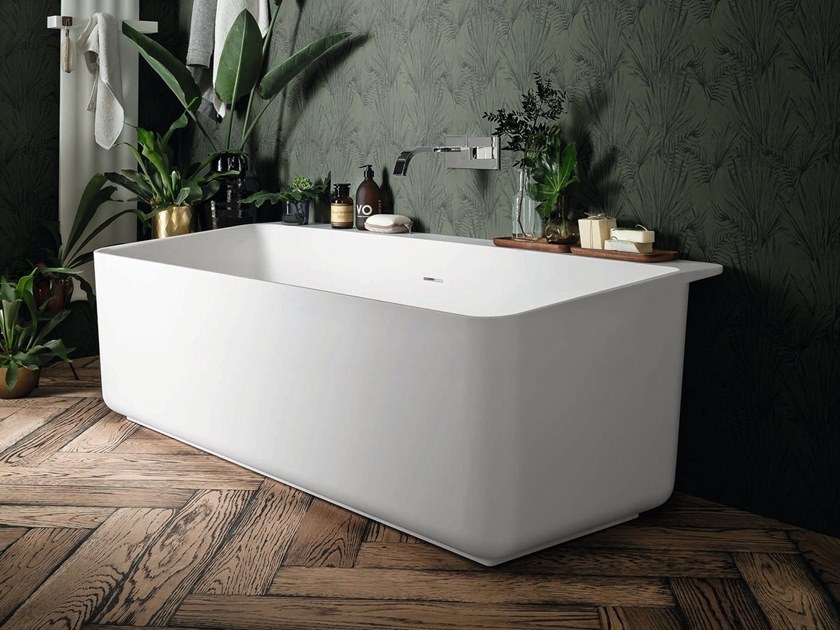
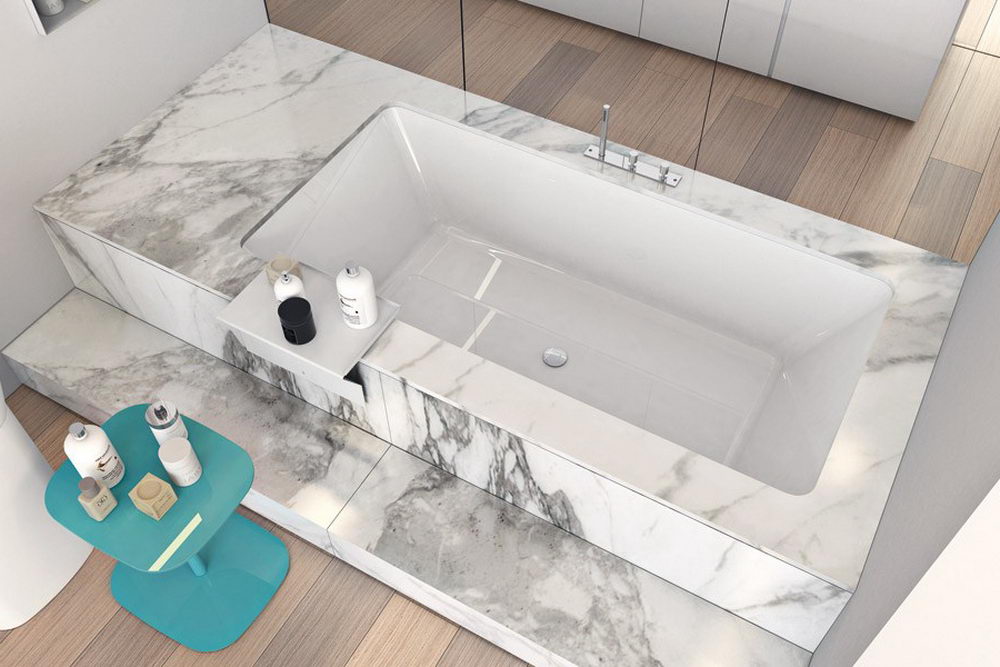
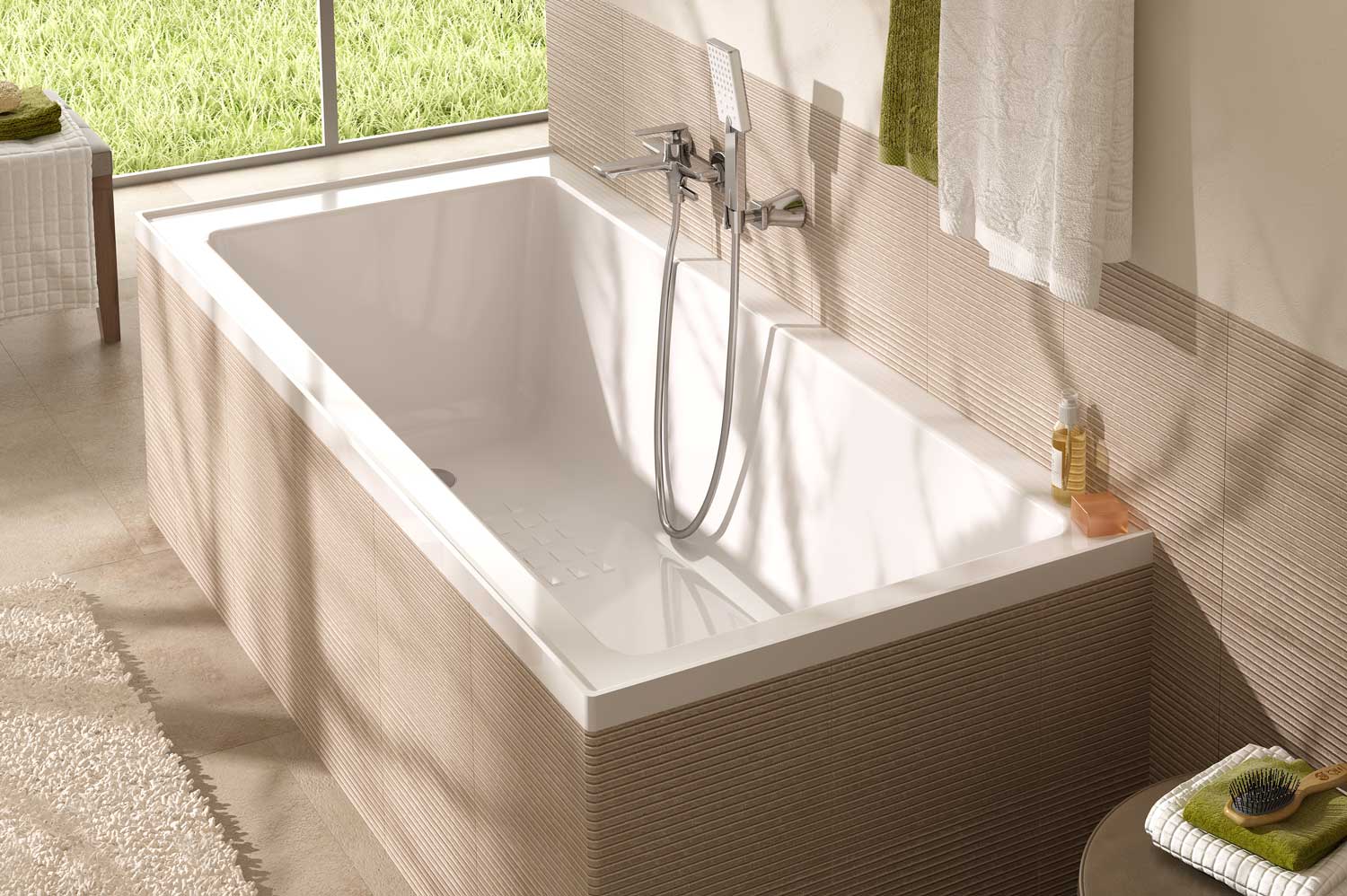
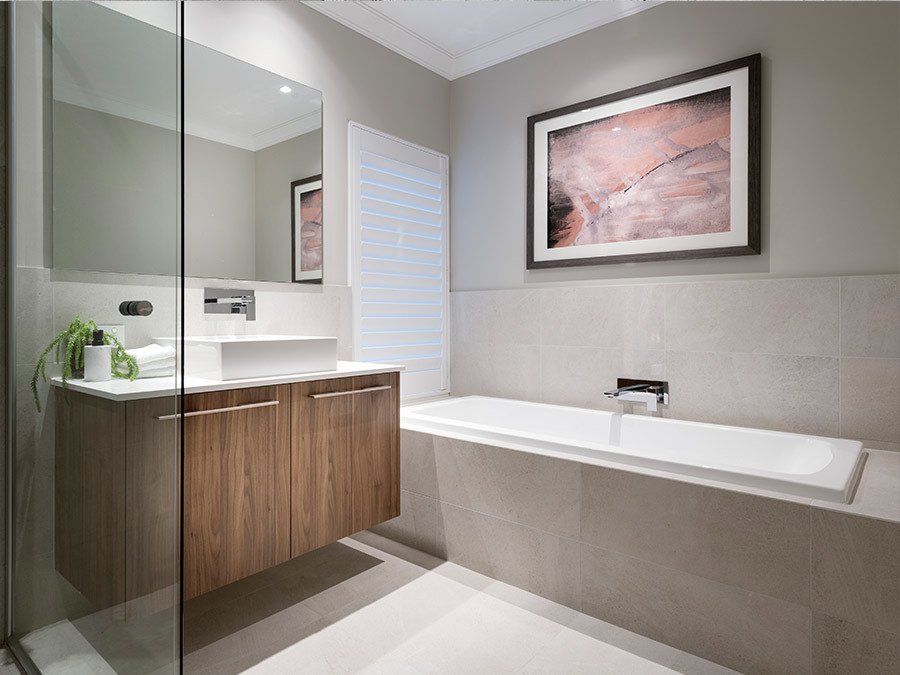
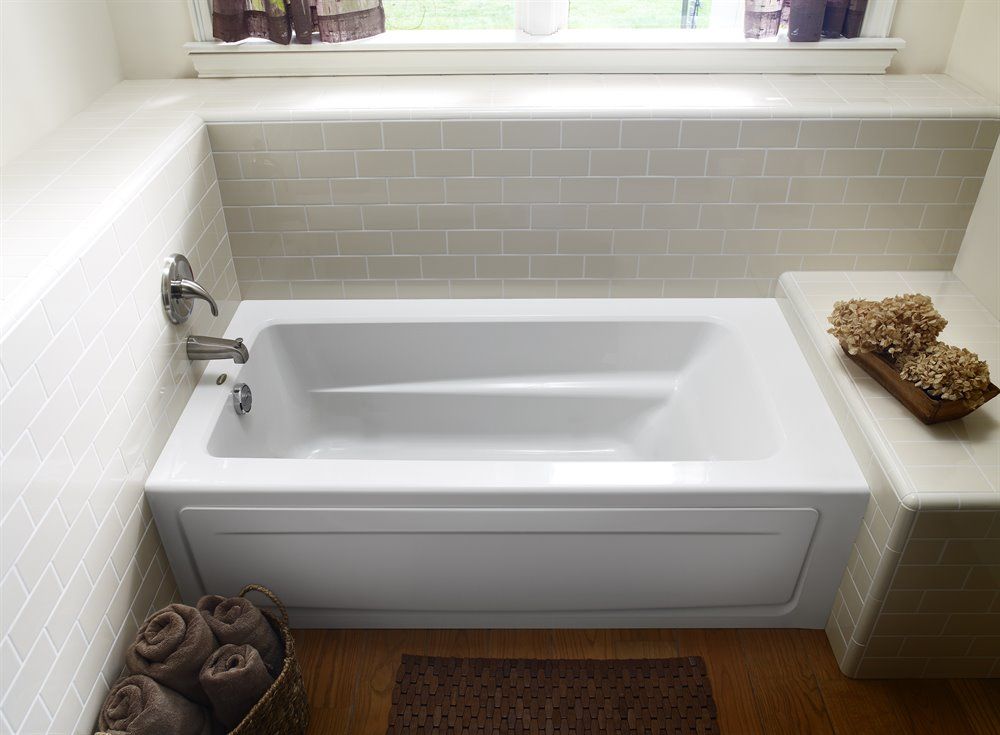
Leave A Reply